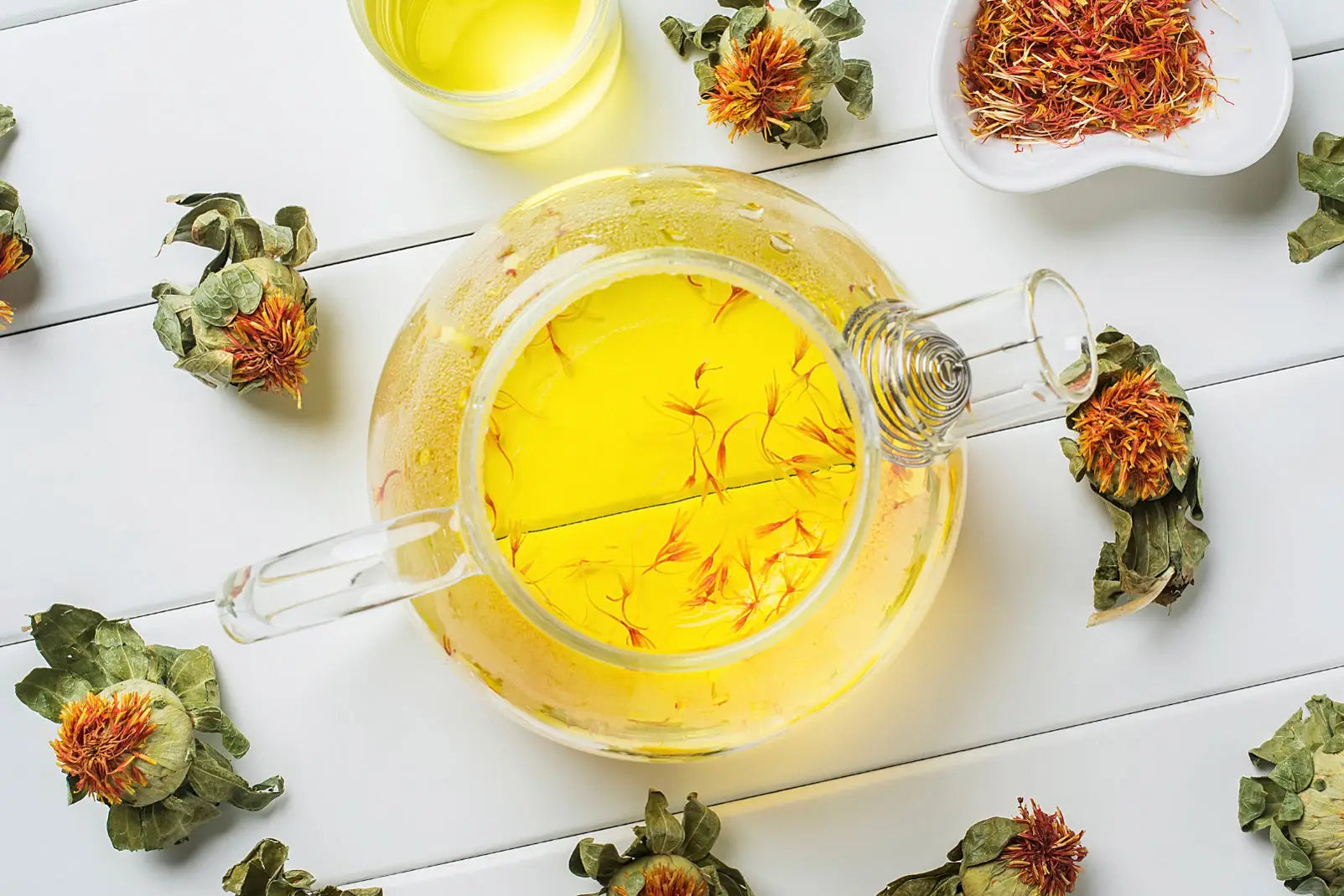Safflower is a lot more than just a colorful plant that brings your garden alive. It is a commercial crop cultivated for its seed oil and an herb revered in traditional medicine for its health beneficial properties.
The bright yellow to the orange flowers of Safflower, or CarthamusTinctorius, is packed with numerous powerful chemical compounds that help improve health in various ways. Carthamus flowers have been an integral part of Persian traditional medicine for thousands of years. They have also been widely used in Traditional Chinese Medicine.
Chemical Composition of Safflower Flowers
The following groups of chemical compounds have been identified in the flowers of the Safflower plant:
- Flavonoids
- Alkaloids
- Polysaccharides
- Phenolic compounds
- Lignans
- C-glycosides
- Quinochalcone
- Quinone-containing chalcones
- Steroids
- Carboxylic acids
- Proteins
- Minerals; calcium, magnesium, manganese, zinc, iron
- Carthamin
- Isocarthamidin
- Safflower yellow A
- Hydroxysafflor yellow A
- Safflamin C
- Luteolin
A Brief History of Safflower Flower’s Use
The vibrant flowers of the Safflower plant were initially used to add color and flavor to foods and dye cotton and silk fabrics.
The history of Safflower’s use for dying purposes traces back to ancient Egypt. The flower petals were also used as a cheaper alternative to saffron and popularly known as “poor man’s saffron”.
However, its medicinal properties became known with time, and the flowers eventually became immensely popular among herbalists. In Traditional Chinese Medicine, flower petals have been used to stimulate blood circulation, alleviate joints pain and stiffness, promote bone healing, and alleviate menstrual issues in women. They were particularly considered effective for stimulating menstruation. On the other hand, Safflower florets have been considered a great natural remedy for various gynecological and heart issues and high blood pressure. In Persia (and now Iran), Carthamus flowers have been used for joints pain, abdominal pain, mouth ulcers, numbness of limbs, phlegm, and certain skin disorders. They have also been valued for their laxative properties.
Safflower’s flower heads were also widely used in North America during the 19th century for more or less similar purposes as the Chinese used them.

Health Benefits of Safflower Flowers
Safflower’s beautiful flower heads can offer the following health benefits:
They Can Help Improve Blood Circulation
The flowers of the Safflower plant have long been known to help regulate blood and improve its circulation. In Traditional Chinese Medicine, the flowers also help prevent and dissolve blood clots and maintain healthy blood flow in the body.
They Are Known to Induce Menstruation
Safflower flowers are considered an emmenagogue. They help stimulate blood flow in the pelvic area and induce menstruation. Moreover, help to improve menstrual flow and alleviate menstrual pain.
They’re Effective for Various Skin Issues
Safflower flower extract works great for skin rashes and measles. It is used to clean wounds, promote quick healing, and is super effective for various skin disorders.

Conclusion
Safflower is one of the oldest herbs known to mankind; its history dates back to 4,000 years. The versatility of this plant has kept it relevant to us humans through time. Even if you have never used Safflower flowers on your own, you have likely used a fabric dyed with it or a food item that’s colored or flavored with these beautiful bright yellow to orange flowers. However, if you’re looking to experience its health benefits, you should use an organic Safflower flower tincture.





Share:
Eyebright herb benefits
Mint family herb health benefits: lemon balm vs mint vs catnip